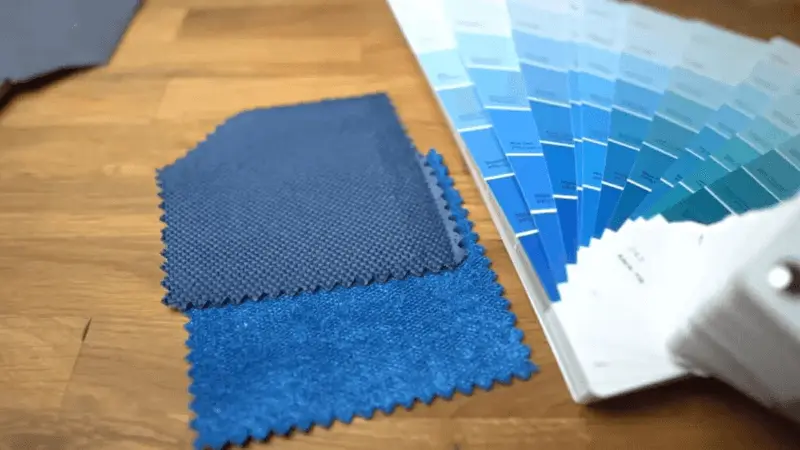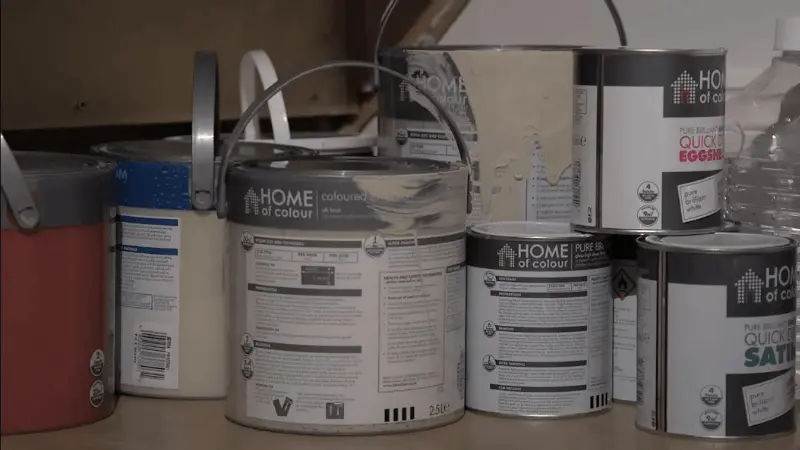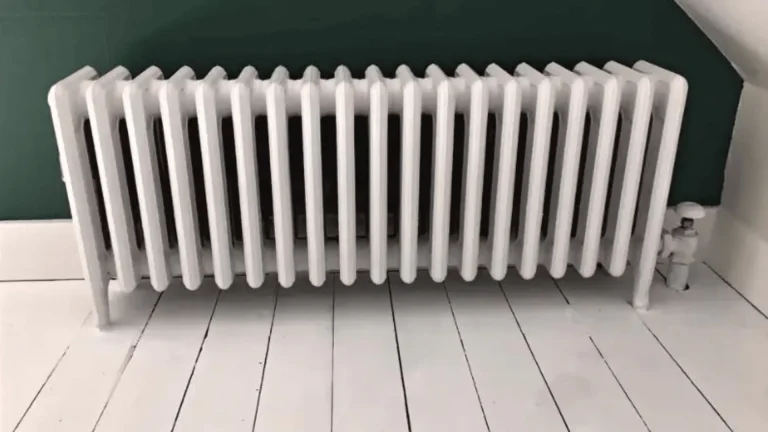How To Choose Paint Colours: 6 Pro-Tips And Mistakes To Avoid

DIY DOJO is reader-supported. We may earn an affiliate commission when you buy through links on our site. Find out more.
When it comes to selecting paint colours, it can be challenging to find hues that are visually appealing. The shades may appear too vibrant or lackluster, and what looks impressive in the store may not translate well in your home. That’s why it’s crucial to follow a reliable process for determining how to choose paint colours that will look stunning in any room.
Choosing paint colours for your home can feel like you’re completely alone. You have to choose the cool colours that will be the backdrop to your life for years to come. However, you do not need to choose the right colours alone. This blog will give you 6 top tips for choosing paint colours like a pro.
6 top tips for choosing paint colours like a pro
Choosing the best paint colour for your space is one of the toughest things about interior design. One colour can completely change the feel of a room to room, and if you choose interior paint colours poorly, it can make the room feel smaller, darker, and more closed in. If you have a big space, bright colours can make it feel even bigger and more open.
On the other hand, you might have a small room or need to make it feel more spacious. In that case, you might want to choose dark colours. Luckily, some simple tips for choosing paint colours will help you choose the perfect tone for any room. Here is a guide to choosing paint colours like a pro:
1-Consider the mood you want to create:
If you are choosing a colour scheme for your home or any other project, it’s important to consider the mood you want to create in the parts of the room. Different colours can evoke different emotions and feelings, so it’s crucial to select a colour that aligns with the desired mood of the room.
For example, if you want a calming and peaceful environment in a bedroom, consider using soft and muted shades of blue or green. If you’re looking for a bold and energetic feel in living room walls, consider using vibrant shades of red or orange.
A room’s mood can greatly impact how it is perceived, so it’s important to choose the perfect paint colour to achieve the desired atmosphere. Considering the mood you want to create will ultimately lead to a more cohesive and visually appealing space.
2-Choose your favourite colours first:

It’s your space that you want to paint, so do not forget to pick the cool colours of your choice first. Choose one of your favourite colours or colours that appeal to you the most. You can use colour schemes or palettes to pick your favourite paint.
This is one of the best ways to choose paint colours. When you pick your favourite colours then, you have to narrow it down to 4-5 options, this thing makes it easier for you to select the one for your space. Doing this thing will save you time, you don’t have to get any expert advice, or you don’t have to look for any combination and recommendations.
3-Use colour wheels:
Colour wheels are essential for anyone selecting paint colours for their rooms, floor, bathroom, or any other project. These wheels consist of many paint colours arranged in a circular pattern, with primary colours, secondary colours, and tertiary colors all included.
Using a color wheel, you can easily determine which colours work and will complement each other and which will clash. You can also experiment with different colour combinations using the color wheel to see how different accent colours interact.
4-Take into account the lighting:
When choosing your paint colours for a room or any other project, it’s essential to consider the lighting conditions in the space. The type of lighting and the natural light that hits the walls can significantly affect the way the colour will look in the adjoining living room.
For example, if a space has a lot of natural light, a bright or bold colour may appear even more vibrant. However, the same color may appear dull or washed out in a space with low light or artificial lighting. By considering the lighting, you can choose a color that will look great in the room and create the desired mood and atmosphere.
5- Don’t be afraid to get creative:
When selecting paint colors, it’s important not to be afraid to get creative and experiment with different colors in different combinations, complementary colors, or undertones. While it’s important to consider factors such as mood, lighting, and colour theory, adding a personal touch to a space can make it unique and special. Consider using bold accent walls to add interest to a room or unexpected tints for a ceiling to create a sense of depth and dimension.
The possibilities are endless, and by getting creative with paint colors, you can make a small space that is truly personalized and reflects your unique style and taste. Remember, paint can always be changed if you don’t like the result, so don’t be afraid to experiment and try something new.
6- Look for inspiration:

Finding inspiration is essential when selecting paint colors for a small space. There are many sources of inspiration that you can draw from, such as design magazines, social media platforms like Pinterest and Instagram, and even nature. By gathering testers, you can refine your ideas and develop a specific color palette.
You can also find inspiration by looking at the existing elements in the small or dark room, such as furniture, artwork, or fabrics, and choosing the right paint colour that complements or contrast with the color throughout those elements. By looking for inspiration, you can find new and exciting scheme ideas for your space and create a cohesive and visually appealing color scheme.
6 Common Mistakes to Avoid When Choosing Paint Colors:
Certainly, here are some common mistakes to avoid when choosing paint colors:
Not testing the paint:

Don’t rely solely on the paint swatch or chip when deciding. Always test the paint color in the room and the lighting where it will be used. This can prevent surprises and disappointment once the painting is done.
Ignoring the existing decor:
When choosing a paint color, consider the colors and style of the furniture, flooring, and other elements in the room. A color that looks great in a showroom or magazine may clash with your existing decor.
Forgetting about the room’s purpose:
Your home’s rooms serve different purposes, and your chosen paint colour should reflect that. For example, you may want a calming color for a bedroom but a more energizing color for a home office or workout room.
Overlooking undertones:
Even if a color looks perfect at first glance, undertones may clash with other elements in the room. Take the time to study the undertones of color to ensure it complements your decor and lighting.
Going too bold:
While a bold color can be exciting, it may not be the best choice for a large, open room or with lots of natural light. Instead, consider using bold colors as accents or in smaller rooms.
Not considering the future:
Remember that paint colors are a long-term investment in your home. Consider how a color will look in different seasons, how it may affect your home’s resale value, and whether you will still like it in a few years.
Radiators can be tricky to paint, but this article provides pro advice on how to use emulsion paint to achieve a beautiful finish.
Is there an app for choosing paint colours?
There are many, I prefer the one AkzoNobel Decorative Coatings B.Vmade (developer name), and the app name is Dulux Visualizer. This app will allow you to see different hues on your well and see how they look in kitchens, small bedrooms, or other spaces. This app uses different technology if you want to get it right.
Conclusion
Choosing paint colors is an essential part of any remodel or renovation project. It’s important to choose colors that reflect your personality and fit well with the overall design of your home or office. It’s not every day that we get to make choosing paint colors for a new project, but it’s a pretty fun process when you get the chance. We’ve compiled a few tips for choosing paint colors that you might find helpful when getting started. We hope you try them out and make your home or office look great!
Paint smell can be overwhelming, but this article provides 12 easy and effective DIY methods to help you eliminate fumes and enjoy your freshly painted space.
FAQS:
If you’re worried about potential paint spills while painting your walls, be sure to check out our tips for getting paint out of carpet without damaging your flooring!”







Can you be more specific about the content of your article? After reading it, I still have some doubts. Hope you can help me.